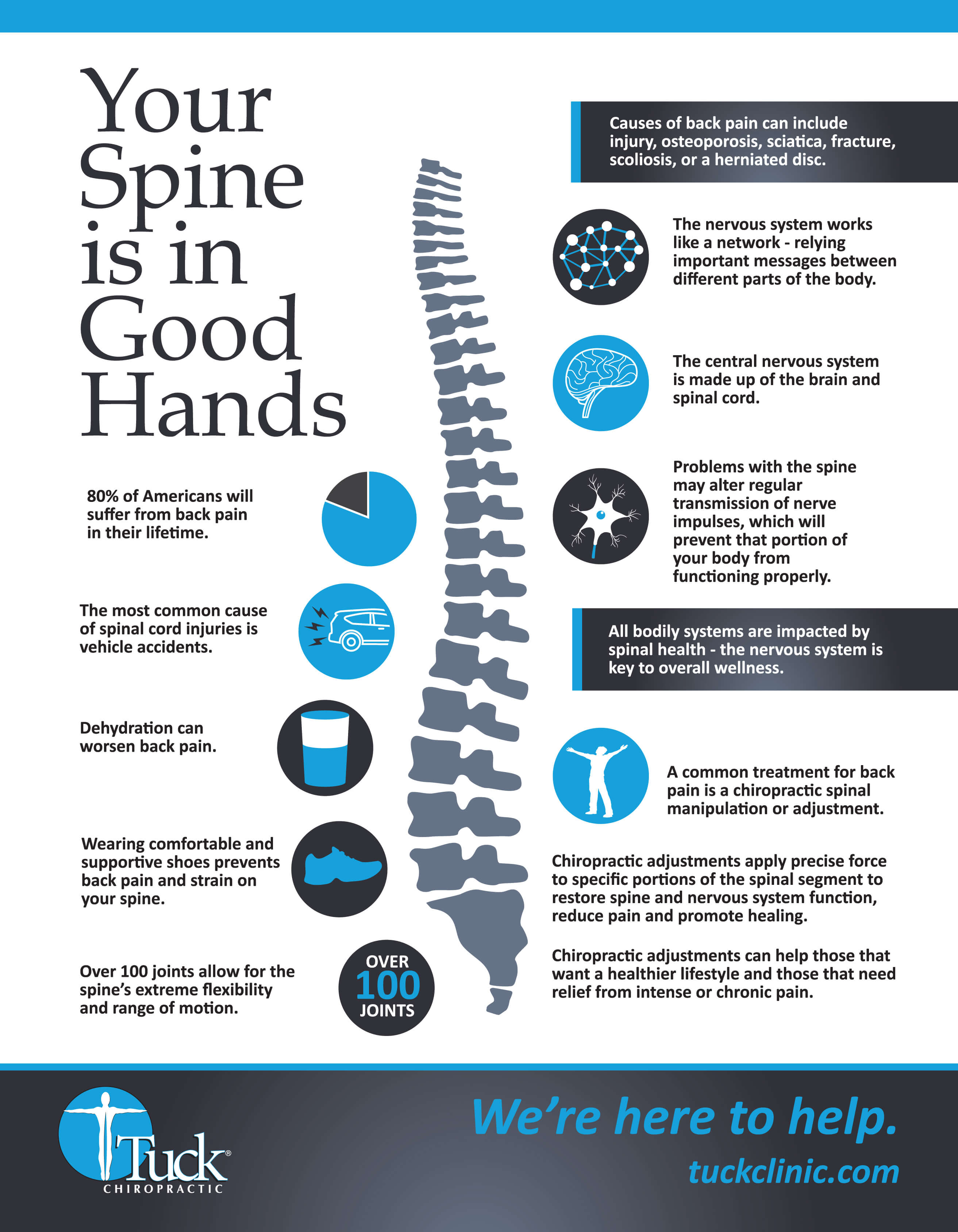Daily Practices That Lead To Pain In The Back And Methods For Avoidance
Daily Practices That Lead To Pain In The Back And Methods For Avoidance
Blog Article
Write-Up Writer-Cates Harper
Keeping correct position and staying clear of typical challenges in everyday activities can considerably affect your back health. From exactly how you sit at your desk to exactly how you lift hefty items, small modifications can make a large distinction. Imagine a day without the nagging neck and back pain that impedes your every move; the remedy might be easier than you think. By making a few tweaks to your daily habits, you could be on your means to a pain-free presence.
Poor Stance and Sedentary Way Of Living
Poor pose and a less active way of life are two significant factors to pain in the back. When you slouch or inkling over while resting or standing, you placed unneeded strain on your back muscles and spine. This can cause muscle mass imbalances, tension, and ultimately, chronic back pain. Furthermore, sitting for long periods without breaks or exercise can damage your back muscular tissues and result in stiffness and pain.
To combat bad stance, make an aware initiative to sit and stand up straight with your shoulders back and aligned with your ears. Keep in mind to keep your feet level on the ground and stay clear of crossing your legs for prolonged periods.
Incorporating just click the following article extending and strengthening exercises right into your day-to-day regimen can also aid improve your stance and reduce neck and back pain associated with a sedentary lifestyle.
Incorrect Training Techniques
Inappropriate lifting techniques can substantially add to back pain and injuries. When tmj chiropractor lift hefty items, keep in mind to bend your knees and utilize your legs to lift, as opposed to counting on your back muscular tissues. Stay clear of turning your body while lifting and maintain the things close to your body to lower stress on your back. Related Site to keep a straight back and prevent rounding your shoulders while raising to avoid unnecessary pressure on your spine.
Always examine the weight of the things prior to lifting it. If it's also hefty, ask for assistance or use tools like a dolly or cart to move it safely.
Remember to take breaks during raising tasks to offer your back muscle mass a possibility to relax and protect against overexertion. By applying appropriate lifting techniques, you can avoid back pain and lower the danger of injuries, ensuring your back stays healthy and strong for the long-term.
Lack of Regular Exercise and Stretching
A less active lifestyle lacking normal exercise and extending can dramatically contribute to pain in the back and pain. When you do not take part in exercise, your muscles end up being weak and inflexible, resulting in poor position and boosted stress on your back. Regular workout assists reinforce the muscle mass that sustain your spine, boosting security and decreasing the threat of back pain. Incorporating stretching into your regimen can likewise enhance adaptability, preventing rigidity and discomfort in your back muscular tissues.
To avoid pain in the back brought on by an absence of exercise and stretching, go for at the very least 30 minutes of modest physical activity most days of the week. Consist of exercises that target your core muscular tissues, as a strong core can aid relieve pressure on your back.
Additionally, take breaks to extend and relocate throughout the day, especially if you have a workdesk job. Easy stretches like touching your toes or doing shoulder rolls can assist ease stress and prevent neck and back pain. Prioritizing routine exercise and extending can go a long way in preserving a healthy and balanced back and minimizing pain.
Verdict
So, keep in mind to stay up directly, lift with your legs, and remain active to stop pain in the back. By making straightforward modifications to your everyday practices, you can stay clear of the pain and restrictions that come with neck and back pain. Care for your back and muscle mass by practicing good position, proper training strategies, and normal exercise. Your back will thanks for it!
